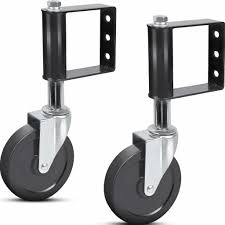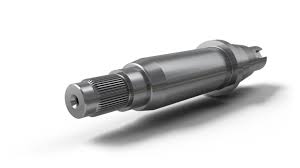All About Castors: Types, Functions, and Common Applications
Castors are vital components that significantly enhance mobility and functionality in various applications. Whether you are a facility manager seeking optimal solutions, an equipment designer focused on precision, or simply someone searching for the perfect castors for your specific needs, comprehending the diverse types, functions, and typical applications of castors is paramount.
When it comes to streamlining movement and improving maneuverability, castors play a pivotal role. In this article, we’ll delve deep into the world of castors, exploring their various types, functions, and the commonplace applications where these versatile components, also known as castors, excel.
Types of Castors
In the mobility solutions world, castors‘ diversity is genuinely remarkable. Castors come in various shapes, sizes, and materials, each customized to meet specific needs and challenges. Understanding the different types of castors is fundamental to making informed decisions, whether you’re outfitting furniture, equipment, or industrial machinery. This section will explore various available castors, from versatile caster wheels to specialized options like furniture and heavy-duty casters. Discover each castor type’s key characteristics and ideal applications, helping you choose the perfect fit for your mobility needs.
-
Caster Wheels
Caster wheels are the cornerstone of the castor world. They come in various materials, including rubber, polyurethane, and steel. Each type offers exceptional benefits and drawbacks, making choosing the right one for your specific requirements essential.
-
Furniture Casters
Furniture casters come in various styles, such as swivel, fixed, and locking. These castors are specially designed for use with furniture, providing ease of movement and enhancing versatility.
-
Industrial Casters
Industrial casters are built to withstand heavy loads and rugged conditions. They are commonly used in manufacturing, warehousing, and other industrial settings where longevity and reliability are paramount.
-
Swivel Casters vs. Fixed Casters
Understanding when to use swivel or fixed casters is crucial for optimal mobility. Swivel casters offer maneuverability, while fixed casters provide stability. We will explore the best scenarios for each type.
-
Locking Casters
Locking casters offer added security and stability. Learn about the different locking mechanisms and the applications where they shine.
-
Heavy-Duty Casters
Heavy-duty casters are the answer for tasks that require the utmost strength and durability. Discover the typical applications that benefit from their robust design.
The world of castors offers a wide range of options for various applications. Understanding their characteristics helps you make informed decisions to meet your mobility needs. Choose the right castor type to ensure optimal performance in your projects. Explore the possibilities and roll smoothly towards your mobility solutions!
Functions of Castors
Castors are not just wheels; they are the unsung heroes of mobility. These versatile components serve a multitude of functions that go beyond mere movement. This section will uncover castors’ roles, from enhancing mobility and load distribution to controlling noise and vibrations. Understanding their processes will empower you to optimize their usage in your applications.
-
Mobility and Maneuverability
Castors make it easy to move heavy objects or equipment with minimal effort.
-
Load Distribution
They distribute weight evenly, reducing the risk of damage to floors and surfaces.
-
Equipment Stability
Castors contribute to the stability of equipment, ensuring safe operation.
-
Noise and Vibration Control
Quality castors can minimize noise and vibrations, enhancing the user experience.
-
Ergonomic Considerations
Learn how suitable castors can improve ergonomics in various settings.
Common Applications
Castors find their way into countless aspects of our daily lives, often working silently behind the scenes. Whether you realize it or not, they are integral to various settings, from home to industrial environments. In this section, we will explore the diverse and typical applications where castors are indispensable, and shed light on their pivotal role in ensuring smooth operations and convenience.
-
Residential Use
From furniture to appliances, castors are found in numerous household items.
-
Commercial and Office Spaces
Office chairs, carts, and trolleys all benefit from the mobility castors provide.
-
Industrial Environments
Manufacturing machinery and material handling equipment rely on industrial castors for efficiency.
-
Medical and Healthcare
Castors are essential for hospital beds, carts, and gurneys in healthcare settings.
-
Retail and Hospitality
Shopping carts and display stands utilize castors to enhance customer experiences.
Factors to Consider When Choosing Castors
Selecting the suitable castors is not a one-size-fits-all endeavor; it requires careful consideration of several factors. From load capacity to surface types and locking mechanisms, these decisions can significantly impact the performance and safety of your equipment or furniture. In this section, we will guide you through the crucial factors to remember when making your castor choices, and ensure your mobility solutions align perfectly with your needs.
-
Weight Capacity
Determine the load capacity needed for your specific application.
-
Flooring and Surface Type
Consider the type of flooring or surface where the castors will be used.
-
Swivel vs. Fixed
Evaluate whether you need maneuverability or stability.
-
Locking Mechanisms
Determine if locking castors are necessary for added security.
-
Noise and Vibration Control
Prioritize comfort and noise reduction.
-
Budget Considerations
Balance your requirements with your budget constraints.
Maintenance and Care Tips
Proper maintenance and care are necessary to keep your castors rolling smoothly and prolong their lifespan. These steps must be revised to avoid premature wear and reduced functionality. In this section, we will provide valuable insights and tips on how to care for your castors, including regular cleaning, lubrication, and knowing when it’s time for replacements. Your castors will thank you with long-lasting, reliable performance.
-
Regular Cleaning and Lubrication
Keep your castors in top shape with routine cleaning and lubrication.
-
Inspection for Wear and Tear
Learn how to identify indications of wear and when it’s time for replacements.
-
Replacing Damaged Castors
Follow best practices for replacing damaged or worn-out castors to ensure continued functionality.
Making Informed Choices
To sum it up, castors are pivotal in improving maneuverability and overall functionality in various scenarios. You can confidently make informed decisions that match your precise needs and preferences by gaining knowledge about the diverse castor types, their functions, and common usage scenarios.
Explore a Wide Range of Castors
Ready to find the perfect castors for your applications? Visit https://th.misumi-ec.com/th/ to traverse various castor options that cater to multiple industries and requirements. Make mobility a breeze with the suitable castors from MISUMI.
Enhance mobility and efficiency with our high-quality castors. Contact us to explore our castor options and transform your equipment or facility.



